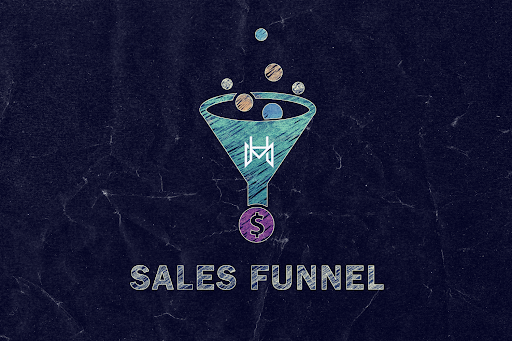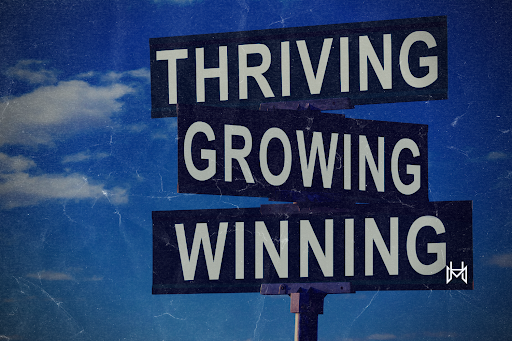How Call Tracking Can Revolutionize Your Business?
Getting sales for any type of business whether online or offline is the trickiest part. The success of your business also depends on it. And to get the customers to buy your product or services, you will have to understand and determine the customer’s journey too. A sales call funnel can help you effectively with that. However, tracking them is also necessary.
We have seen entrepreneurs and sales teams wondering and asking around, “Should I track my call funnels?” Well, the answer is yes, a sales funnel can help you bring revolutionary changes to your business and increase revenue too.
Let’s understand what a sales call funnel is and how it can help your business grow!
Sales Call Funnels: What is it?

A sales funnel is a marketing concept that helps businesses track customer journeys with their brand from start to end. The sales funnel helps you identify prospective customers at their very early stage and helps you get them till the end of the funnel, i.e., buy your product or services. A sales funnel is sometimes also addressed as a conversion funnel.
If you might have understood, the sales call funnels to help you convert the lead into sales. Hence, companies need to have intentionally crafted sales funnels to get more revenue out of their leads. As per industry reports, still, 68% of companies have not been able to identify their sales funnel, which led them to unconverted leads.
Sales Funnel Stages
Now, as you know about the sales funnel, it is time you learn more about it. The sales funnel has different stages that describe the journey of potential customers. Sales funnel stages are divided into four different parts.
#1: Awareness Stage
This is a stage where your potential customer will figure out their pain points, problems, and issues they are facing. There’s a reason this is called the awareness stage, here your prospective customer will know about your brands and the products or services you provide. They might have reached this stage of the sales funnel, through your marketing strategy for ranking higher or getting leads from the search engine.
#2: Desire Stage
Once, your potential customer knows about your brand and the products or services you provide. They know you provide the solution for their problem, but you have to make them realize that you offer the best one in the market. For this, you can provide them with information about the solution through the blog post, white paper, guides, and other relevant information to help them move ahead in the funnel.
#3: Decision Stage
At the decision stage, the customers are ready to buy the solution but they are considering a few more options. They will also compare features, prices, and other important factors before buying the solution from you. You can help them move ahead in the sales funnel to take the final action. You can do so by offering them an exclusive discount, bonus, or even free shipping.
Do you know around 50% of decision-makers prefer to be contacted over a call and it helps them reach the action stage easier?
#4: Action Stage
This is the last stage of the sales funnel, probably, based on the motto of your marketing campaign. At this stage, the prospective buyer will become your customer. Here you can also upsell or cross-sell your services, and if nothing you can ask them to sign up for your newsletter.
As soon as a customer purchases your product, you can keep them informed about new products and assist them with any issues they may have. And it will ultimately lead them to become your loyal customer.
How do sales call tracking help your business grow?

Businesses that don’t track sales won’t be able to measure their success and forecast their future growth too. But today in this digital world, you have sales tracking tools that can help you steer your ship towards success and chart a course that leads to growth and profitability. So, let’s see why businesses should track their sales, and what benefits will it bring!
1. Monitor performance
Businesses can monitor their performance and determine how well they are doing by tracking sales calls. This allows them to identify areas that need improvement and make adjustments to their marketing funnel accordingly.
2. Measure success
It also allows businesses to measure their sales process success and determine if they are meeting their goals, helping them to stay on track and make necessary changes to achieve their objectives.
3. Identify trends
Tracking sales data over time allows businesses to identify trends and patterns in consumer behavior. Later on, this information can be used to develop marketing and sales strategies that are more effective and targeted to their customers’ needs.
4. Forecast future sales
By analyzing sales data, businesses can forecast future sales and plan for future growth. This process helps them to make better decisions about inventory, staffing, and other aspects of their business.
5. Improve customer service
Tracking sales calls can also help businesses identify customer needs and preferences. With that it will help them improve customer service and create a better customer experience, leading to increased sales and customer loyalty.
In short, tracking sales or sales calls can help you understand the journey of customers, what they are expecting in the form of a solution, and much more.
How to develop an influential sales call funnel?
Developing a sales call funnel is essential. Even though we have moved ahead with the technological approach, some old-school tactics will definitely help you in getting more sales and revenue. Many sales reps still believe that sales calls are more effective than mail and social media approaches. In this section, we will help you build a sales strategy that will help you increase your conversion rates.
Step 1: Identify your target audience

The very first step of your strategy is all about knowing and identifying your target audience. You must know about your potential customers’ needs, pain points, and how your solutions can solve their problems.
Once you have determined these things, create content that answers the queries or educate your prospective buyer about the solution you provide, to grab their attention. Knowing about your target audience will also give you valuable insights on how to improve your marketing efforts to get the maximum out of it.
Step 2: Bring them to your funnel
As soon as you provide your potential customers with the information, you have already attracted them to your brand, now you will need to bring them to your funnel. To do so, you can entice them with offers, and discounts, or simply ask them to sign up for your newsletter.
You can also draw them towards your brand with telemarketing, social media marketing, or other organic marketing tactics. You can run paid campaigns and get them into your sales call funnel. Analyze your PPC or marketing efforts through Google Analytics to understand the behavior better.
Step 3: Send them to your landing page
Getting them to funnel won’t just work, you will need them to land on a page where they can move ahead with the purchase or at least provide contact information. For that, you need to create an effective and enticing landing page.
Your landing page should have all the information, be engaging, and compel your customers to provide their contact information. Apart from that, it should also have properly targeted keywords and if possible add a video describing your product and services.
Step 4: Nurture the lead through a call
A report by BIA Kelsey shows that 66% of sales managers say the telephone generates the most qualified leads. What else do you need to know about? The sales call can also nurture the lead better. All you have to do is keep the script ready, know all the details about the solutions you provide, and be a good listener too.
Answer their questions, stay in touch with them through follow-up calls, and make sure that they don’t feel disturbed but helped to get to the solution. This will help you move the prospect toward the end of the sales process and close the deal.
Step 5: Convert them into your customer
The last step is the conversion. Here, you can help the customer with a smooth purchase process, guide them at every end and help them get the solution as soon as possible. Your work doesn’t end here. If the customer has purchased the solution, you should give them a call and ask if they’re facing any issues or need any help.
Even if they don’t purchase, your communication shouldn’t stop there. You can give them an update call about the new product launch, offers, and other things. This will help them remember your brand. You can also ask them to follow you on social media platforms.
Call tracking: how does it work?

So far, you read everything about call tracking, what it is, why should businesses use them, and even a brief on how to develop an influential sales call funnel. This is the right time for you to understand how call tracking works. Let us break down the technical part of call tracking for you in a fun and easy-to-understand way.
We all know call tracking is a system that helps businesses keep track of the calls they receive. It’s like having a superpower to listen to all the phone conversations that come through your business line.
With call tracking, you can monitor which marketing campaigns are driving the most calls, how long your sales reps are spending on the phone, and even which callers hang up before making a purchase. But the question is how?
The call tracking works in a pretty simple way.
First, you need to register yourself with a call tracking number, for that select if you need a toll-free number or a local number.
This number is the unique tracking number that will help you track all incoming calls. You can add this number to your website, social channels, digital ads, and other marketing collateral.
Next, you will have to add the UTM code in the Google Tag Manager and address which sources you want to track.
In addition to that, you can integrate your call tracking with CRM systems to get a wholesome view of your customer’s journey.
With this, you will be able to figure out call-tracking metrics, train your sales reps on how to use call-tracking data, and regularly review and analyze your call-tracking data to make improvements. If you don’t want to do it yourself, you can also opt for third-party call-tracking vendors.
Conclusion on Should I track my call funnels?
With this, we come to the end of the article educating on call tracking and sales call funnel. In this article, you read about the sales call funnel, call tracking, why it is important, how to track it, and importantly how to develop a sales call funnel.
And that answered your question – should I track my call funnels? Obviously, you should. It will help you understand your customer journeys, conversion rates, customer engagement, and sales metrics.
Not just this, it will also help you analyze your marketing team’s efforts and help them make informed decisions about marketing channels to pick, and marketing content to create for better results. However, you will need to use the ideal marketing tools like Google Analytics, Search Console, Tag Manager, etc. to understand better.
